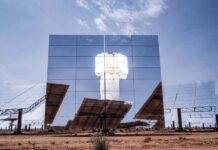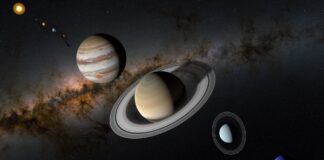Three Chinese taikonauts, part of the Shenzhou-20 crew, are experiencing an unexpected delay in their return to Earth after their return capsule was struck by suspected space debris. The incident, which occurred just hours before their planned departure, highlights the growing concern over the accumulation of space junk and its potential hazards to spacecraft. While the astronauts are safe, officials are currently assessing the extent of the damage and devising a plan for their return.
Background: The Shenzhou-20 Mission
The taikonauts — Wang Jie, Chen Zhongrui, and Chen Dong — have been residents of China’s Tiangong space station since April 24. Their mission has been a successful handover period with the Shenzhou-21 crew, who arrived at the station on Halloween (Oct. 31). The initial plan was for the Shenzhou-20 crew to return to Earth on Wednesday, Nov. 5, concluding their time on the station.
The Incident and Current Status
Earlier Wednesday, the China Manned Space Agency (CMSA) announced the return was postponed, citing an impact by “small space debris.” In a statement posted on the Chinese social media platform Weibo, CMSA representatives indicated an “impact analysis and risk assessment” are underway to ensure the safety of all six taikonauts currently aboard the Tiangong station. Specific details regarding the damage sustained by the return capsule remain unavailable.
The affected spacecraft remains docked with the Tiangong space station. It consists of three separable components: a power and propulsion module, crew living quarters, and a parachute-assisted return module. If any of these components are deemed unsafe, the spacecraft may be jettisoned and allowed to return to Earth without the astronauts. In such a scenario, the Shenzhou-20 crew would return aboard the Shenzhou-21 return module. Following this, another spacecraft kept on standby by CMSA would replace the Shenzhou-21 return module.
Record-Breaking Mission and Parallels with Other Spaceflights
Commander Chen Dong’s situation is noteworthy; he has already broken the record for the longest cumulative time in space by a Chinese astronaut, exceeding 400 days. This delay will further extend his time in orbit, surpassing the record held by Russian cosmonaut Oleg Kononenko (1,111 days).
Dong’s predicament echoes that of NASA astronaut Frank Rubio, who inadvertently broke the record for longest spaceflight by an American (371 days) after his return module was damaged by a meteoroid impact while docked with the International Space Station (ISS). In another instance, NASA astronauts Butch Wilmore and Suni Williams had to extend their stay on the ISS by nine months due to persistent technical issues with their Boeing Starliner capsule.
Recurring Threat of Space Debris
This incident is not an isolated event. In 2023, a piece of debris struck one of Tiangong’s solar panels, causing a partial power outage. As a result, recent spacewalks have included the installation of additional shielding on parts of the station’s exterior.
The International Space Station also faces ongoing threats from space junk and routinely needs to be repositioned to avoid collisions. Over the years, components like the Canadarm2 robotic arm have suffered damage from smaller debris impacts.
The Growing Space Junk Problem and Kessler Syndrome
The amount of space junk orbiting Earth is expanding rapidly, mirroring the increasing number of spacecraft launched into orbit. Experts are increasingly concerned about the possibility of reaching a “point of no return,” where a chain reaction of collisions could render low Earth orbit unusable. This scenario, known as the “Kessler Syndrome,” underscores the urgent need for solutions to mitigate the risks posed by space debris.
Ultimately, the safety of the Shenzhou-20 crew and the continued operation of the Tiangong space station depend on effective management of the growing problem of space debris.
The incident with the Shenzhou-20 crew serves as a stark reminder of the vulnerabilities of spacecraft in the increasingly crowded orbital environment and highlights the importance of proactive measures to protect valuable space assets


























